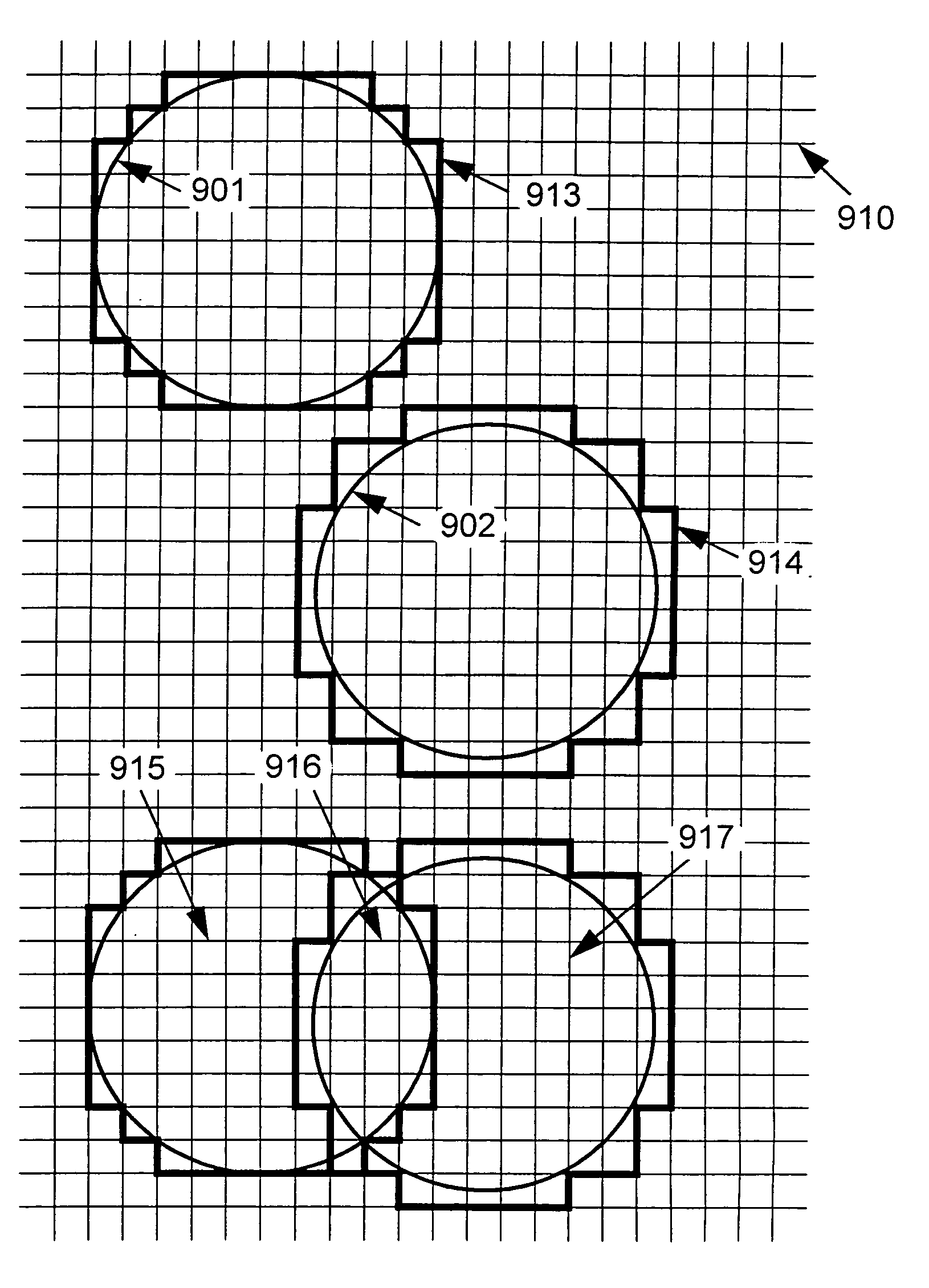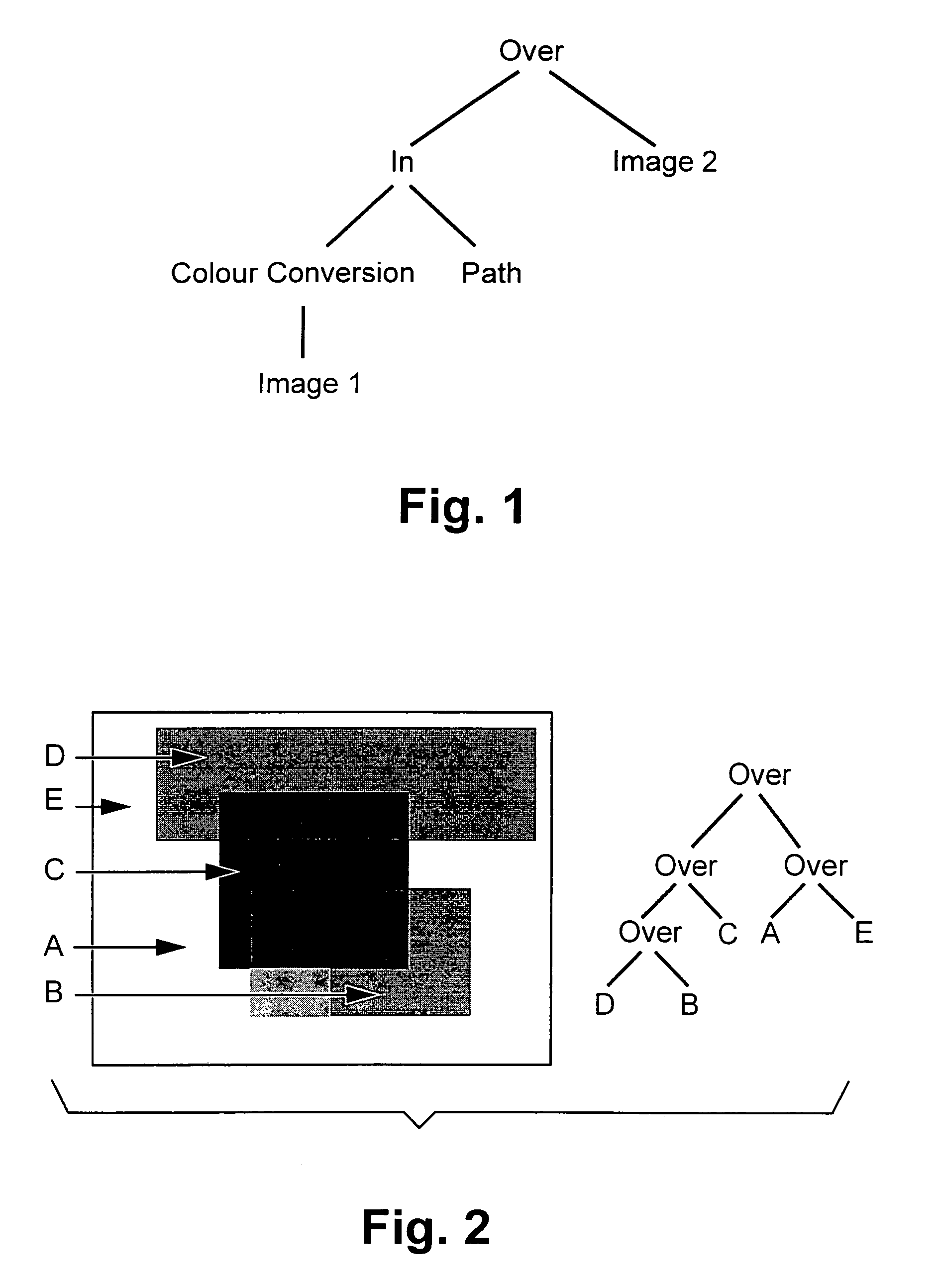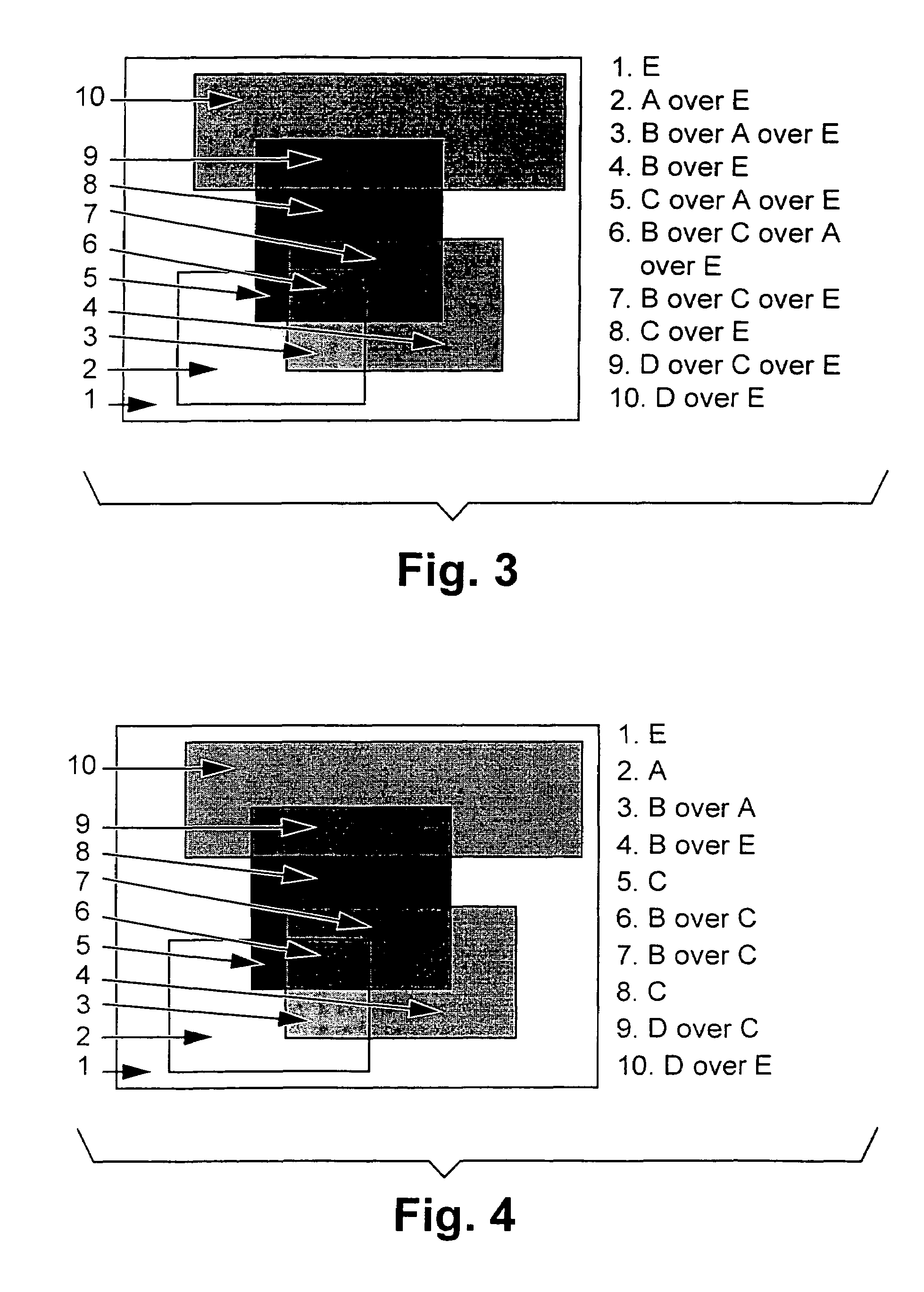Region based image compositing
a compositing and region technology, applied in static indicating devices, instruments, cathode-ray tube indicators, etc., can solve the problems of inefficient approach to completely generating every pixel of every required frame when needed, and the per-pixel cost of compositing is quite high
- Summary
- Abstract
- Description
- Claims
- Application Information
AI Technical Summary
Benefits of technology
Problems solved by technology
Method used
Image
Examples
Embodiment Construction
1.0 Underlying Principles
[0069]The basic shape of operands to compositing operators in most current systems is the rectangle, regardless of the actual shape of the object being composited. It is extremely easy to write an operator which composites within the intersection area of two bounding boxes. However, as a bounding box typically does not accurately represent the actual bounds of a graphical object, this method results in a lot of unnecessary compositing of completely transparent pixels over completely transparent pixels. Furthermore, when the typical make-up of a composition is examined, it can be noticed that areas of many of the objects are completely opaque. This opaqueness can be exploited during the compositing operation. However, these areas of complete opaqueness are usually non-rectangular and so are difficult to exploit using compositing arguments described by bounding boxes. If irregular regions are used for exploiting opaque objects when compositing, then these regi...
PUM
 Login to View More
Login to View More Abstract
Description
Claims
Application Information
 Login to View More
Login to View More - R&D
- Intellectual Property
- Life Sciences
- Materials
- Tech Scout
- Unparalleled Data Quality
- Higher Quality Content
- 60% Fewer Hallucinations
Browse by: Latest US Patents, China's latest patents, Technical Efficacy Thesaurus, Application Domain, Technology Topic, Popular Technical Reports.
© 2025 PatSnap. All rights reserved.Legal|Privacy policy|Modern Slavery Act Transparency Statement|Sitemap|About US| Contact US: help@patsnap.com



